#SAAS App Development
Explore tagged Tumblr posts
Text
Why Businesses Are Switching to SaaS: Key Benefits and Challenges
Did you know that 94% of companies already utilize cloud services in one way or another? Companies looking for agility, scalability, and cost savings are turning towards cloud-native web application development—the new gold standard in technology. Enterprises demand fast, robust, and secure solutions, but shifting to a cloud environment is not without its challenges: integration headaches, security risks, and performance back-ups.
Enter SaaS application development, a cloud-native, efficient approach to working that unlocks productivity and delivers smooth user experiences. But why is SaaS so appealing? What are the hidden pitfalls of this model? More importantly, how can companies sidestep these pitfalls by working with the right development specialists?
Let us explore how cloud-native development is re-wiring industries and how MadvIT, one of the top SaaS development company is taking businesses towards scalable and high-performing SaaS solutions.
What is Cloud-Native Development?
Cloud-native web application development is not an evolution—it's a revolution. In contrast to cumbersome, on-premises software, cloud-native applications use microservices architecture, containerization, and serverless computing to liberate businesses from legacy chains. Such revolutionary applications deliver:
● Scalability – Cloud-native apps scale up and down automatically to match fluctuating workloads.
Resilience – Built-in redundancy delivers higher uptime and reliability.
Rapid Deployment – Automation through DevOps speeds software deployment.
● Cost Savings – Pay only for what you use, eliminating unnecessary expenditures. To read full blog click here :- https://www.apsense.com/article/843146-why-businesses-are-switching-to-saas-key-benefits-and-challenges.html
0 notes
Text
Build a SaaS in 10 Minutes with AI & Replit Agent for Success
Learn how I built a SaaS in 10 minutes using AI and Replit Agent. Discover essential tips, powerful tools, and FAQs to accelerate your SaaS development journey.
#saas development company#hire saas developer#saas development agency#saas software development company#best saas development company#saas development companies#saas developers#saas software development companies#saas development firm#saas development services#saas product development services#saas product development company#SaaS application development services#saas app development
0 notes
Text
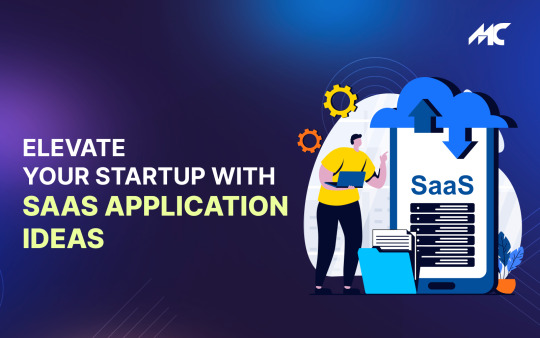
Elevate your startup to new heights with our cutting-edge SaaS application ideas! Streamline operations, enhance user experiences, and drive growth with innovative solutions tailored for scalability and efficiency. Transform your vision into a technological marvel and redefine success in today's dynamic business landscape. Embrace the future with SaaS – because your startup deserves the best!
0 notes
Text
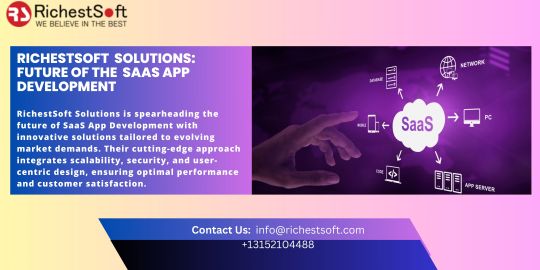
0 notes
Text
GUIDE TO SUCCESSFUL SAAS APP DEVELOPMENT IN 2024 | SSTech System
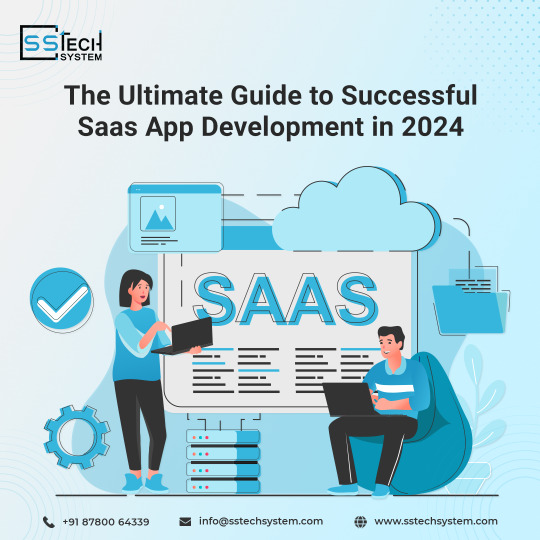
Today, businesses of all sizes seek effective online presence, and SaaS has emerged as an ideal solution. It has significantly transformed how applications are developed and deployed in the market. SaaS app development is leading the web app development revolution.
SaaS isn’t just for small businesses. All sizes and types of businesses rely on websites and applications. Leading tech giants like Salesforce, Zendesk, Adobe Creative Cloud, and Canva also leverage SaaS for their business. With the increasing demand for online presence, SaaS is all set to grow more prominent.
According to the 2023 data, the SaaS market boasts an impressive value of approximately $197 billion, with projections suggesting a remarkable surge to reach $232 billion by 2024.
Looking at the data numbers, it is understood that SaaS has become increasingly popular. But how do you make an effective SaaS app? Let’s look at this detailed guide on SaaS application development in 2024.
Understanding SaaS app development
SaaS stands for service as software. It is a process of delivering applications as a service. However, SaaS applications differ from traditional ones because you don’t need to install them. SaaS applications instead work entirely on the cloud. This approach streamlines accessibility, updates, and maintenance, making it a preferred choice for businesses seeking efficient solutions.
What is a SaaS-based solution?
SaaS-based solution is like a software app hosted and taken care of by another company. So, when a pro software development company makes your SaaS app, it becomes a SaaS-based solution. People can use these apps on web browsers without tricky installations or updates.
Benefits of SaaS app development
Cost efficiency: SaaS apps reduce upfront costs associated with hardware and software, allowing businesses to pay for only what they use. This promotes financial flexibility and efficient resource allocation.
Scalability: Easily scale your software infrastructure as your business grows, ensuring the application adapts to changing demands. This scalability supports long-term business expansion without the need for extensive redevelopment.
Accessibility: Users can access SaaS apps from any location with an internet connection, fostering collaboration and remote work. This enhances flexibility, enabling teams to work seamlessly from various geographical locations.
Automatic updates: When you build a SaaS app, it is often managed by a team dedicated to the updates. This saves time for users and keeps the app running smoothly and safe 24×7. Moreover, you don’t have to update anything manually; you get everything done automatically.
Security: SaaS app development often involves robust security measures, including encryption, authentication, and regular security audits. This ensures that sensitive data is protected, reducing the risk of security breaches and unauthorized access.
Rapid deployment: SaaS applications can be quickly deployed compared to traditional software solutions. This speed of deployment allows businesses to implement new tools and features rapidly, responding promptly to market changes and customer demands.
Enhanced collaboration: SaaS platforms often come with built-in collaboration features, such as real-time document editing and communication tools. This fosters teamwork and improves productivity by enabling seamless collaboration among team members, regardless of their physical locations.
What coding language is SaaS?
The choice of programming language is crucial in SaaS app development. There are a variety of web application languages available. The popular coding languages are Java, Python, JavaScript, etc. Each language offers unique advantages, and the selection depends on project requirements, developer expertise, and scalability needs.
What is SaaS app design?
Well! SaaS app design simply refers to the design of your SaaS app. There is no standard design for SaaS apps. Many custom SaaS development companies can help you build the right SaaS app in 2024. However, you can still consider the following points for a smooth development process:
Intuitive navigation: Ensuring users can easily navigate through the application.
Scalability: Designing interfaces that remain user-friendly as the application scales.
Responsive design: Optimizing the app for various devices, providing a seamless experience across platforms.
SaaS App development process
The SaaS application process is not as simple as it sounds; it includes some complex stages. Here are the major stages of SaaS development in 2024.
Conceptualization
The conceptualization phase is the bedrock of any successful SaaS app development project. At this stage, you define the purpose of your business. This stage also includes defining your features and target audience.
Conduct a comprehensive market analysis to identify gaps, needs, and potential competitors. Understand the pain points of your target audience and conceptualize a solution that addresses those issues and provides unique features that set your SaaS app apart.
Planning
Once the conceptualization phase is complete, transition into the planning stage. Develop a detailed project plan as a roadmap for the entire SaaS app development lifecycle.
This plan should include timelines, resource allocation, and key milestones to ensure the project stays on track. Break down the development process into manageable sprints, assigning tasks to the development team based on their expertise. Recognize possible threats and formulate plans to minimize their impact.
Development
With a solid plan in place, transition into the development phase. Write code and build features according to the specifications outlined in the conceptualization phase. Ensure the development team follows best coding practices and standards to maintain consistency and readability.
Pay special attention to scalability and security during the development process. Design the architecture of the SaaS app with scalability in mind, allowing it to handle increased loads and user growth seamlessly.
Testing
Testing is a critical phase to guarantee the reliability and stability of the SaaS app. Conduct thorough testing, including unit testing, integration testing, and system testing, to identify and fix any bugs or glitches. Perform usability testing to ensure that the user interface is intuitive and user-friendly.
Deployment
After successful testing, it’s time to deploy the SaaS app to users. Consider a phased release approach, introducing the application gradually to different user segments. This method helps identify unforeseen issues in a controlled environment and allows for prompt resolution.
Maintenance
The SaaS app development process doesn’t end with deployment; ongoing maintenance is crucial for long-term success. For any SaaS-based app, regular maintenance is crucial. It helps in keeping a check on bugs, security vulnerabilities, and performance issues.
Stay responsive to user feedback, incorporating improvements and refinements based on their experiences. Additionally, consider introducing new features and functionalities to keep the app relevant and competitive.
Let us tell you that the success of SaaS app development in 2024 hinges on the systematic implementation of all these stages.
Final words
To guarantee the optimal performance of your SaaS application in 2024, consider opting for website development services. Dedicated website development services specialize in SaaS development, ensuring the successful creation of web solutions.
Tags:
Custom saas development
Saas App Development
SaaS Development
SSTech System
#Custom saas development#Saas App Development#SaaS Development#SSTech System#website development#web solutions#saas app#software solutions#web application india#tumblr#article
1 note
·
View note
Text
Top Mistakes that Could Derail Your Custom SaaS App Development Project
Custom SaaS applications have indeed become a cornerstone of success for various industries. These tailor-made solutions, offered by a trusted Custom SaaS App Development Services Company, offer unparalleled flexibility and scalability. They have become a popular choice among businesses looking to streamline their operations and enhance customer experiences. However, the journey towards developing a custom SaaS application can be a complex and challenging one. To ensure the success of your project, it's crucial to avoid common mistakes that could potentially derail your custom SaaS app development venture.
Here are the key mistakes that you should avoid.

Common mistakes that can derail your project
1. Choosing the Wrong Custom SaaS App Development Services Company
One of the most critical decisions you'll make in your custom SaaS app development journey is selecting the right development partner. Your choice of a Custom SaaS App Development Services Company can significantly impact the project's outcome. It's essential to partner with a company that has a proven track record in developing SaaS solutions for various industries. Look for expertise in your specific niche and a team with a deep understanding of your business needs. By strategically placing your trust in a skilled partner, you can avoid potential pitfalls and ensure a smoother development process.
2. Neglecting Comprehensive Requirements Analysis
Before embarking on your custom SaaS app development project, it's crucial to conduct a thorough requirements analysis. Failing to define your project's objectives, scope, and functionality can lead to costly delays and misunderstandings down the road. Ensure that you work closely with your development team to outline your business goals, user requirements, and technical specifications. A well-defined project scope sets the foundation for a successful SaaS app development venture.
3. Underestimating the Importance of User-Centric Design
A beautiful and intuitive user interface is a hallmark of successful SaaS applications. Neglecting the user experience (UX) and user interface (UI) design can be a costly mistake for any Custom SaaS App Development Services Company. Your SaaS app's user interface should be intuitive, easy to navigate, and visually appealing. A well-designed UI/UX can enhance user adoption rates and overall satisfaction, contributing to the success of your application.
4. Ignoring Scalability and Security
Scalability and security are two critical factors often overlooked during custom SaaS app development. A successful SaaS application should be able to grow with your business and handle increased user loads without compromising performance. Additionally, security is paramount, especially if your application handles sensitive data. Your Custom SaaS App Development Services Company should implement robust security measures to protect your data from breaches and ensure compliance with industry regulations.
5. Skipping Thorough Testing and Quality Assurance
Rushing the testing and quality assurance phase can lead to a slew of issues post-launch. Proper testing is essential to identify and address bugs, glitches, and performance issues before your SaaS application goes live. Comprehensive testing ensures that your application functions smoothly and meets user expectations. Your development team should conduct rigorous testing at all stages of development to ensure a flawless user experience.
Conclusion
Depending on a custom SaaS app development project is an exciting endeavor that can transform your business operations and drive growth. However, avoiding the aforementioned mistakes is crucial to ensure the success of your project. Partnering with the right Custom Saas App Development Services Company, conducting a thorough requirements analysis, prioritizing user-centric design, addressing scalability and security concerns, and investing in comprehensive testing and quality assurance are key steps toward a successful SaaS application. By heeding these recommendations, you can navigate the complex world of custom SaaS app development with confidence and achieve your business objectives effectively.
0 notes
Text
Saas application development services
Businesses are quickly implementing Software as a Service (SaaS) solutions for their operational demands in the digital age. We at Squillion are experts in creating dependable, scalable, and secure SaaS app development that serve a variety of sectors.
0 notes
Text
SaaS Development: Building Cloud-Based SaaS Applications and Services
Software as a Service (SaaS) has transformed the software industry, offering businesses and individuals a flexible and cost-effective way to access and utilize software applications. SaaS development involves creating cloud-based applications that are hosted on remote servers and made available to users over the Internet. This model eliminates the need for users to install and maintain software locally, streamlining the process and reducing operational overhead. Building a SaaS involves several key steps that ensure the development of a reliable and scalable solution.
Understanding SaaS Development
SaaS development entails crafting applications that are centrally hosted on cloud infrastructure and accessible via web browsers. This contrasts with traditional software development, where applications are installed on individual devices. The cloud-based nature of SaaS brings numerous advantages, such as easy accessibility, automatic updates, and seamless scalability.

Key Steps to Build a SaaS
1. Idea and Conceptualization

Every successful SaaS application starts with a clear idea. Identify a problem that the application can solve or a need it can fulfill. Define your target audience, understand their pain points, and conceptualize how your SaaS will address them. In the process of building a Software as a Service (SaaS) application, meticulous planning and thoughtful architecture are paramount.
During this critical step, developers define the technology stack, design the user interface, and structure the application's components. Proper planning ensures that the SaaS solution aligns with the target audience's needs, while a well-considered architecture sets the stage for scalability, security, and efficient development throughout the project lifecycle.
2. Market Research

Research the competitive landscape and market demand to ensure your SaaS idea is viable. Identify similar solutions, analyze their strengths and weaknesses, and find a unique value proposition that separates your SaaS. Market research plays a pivotal role in SaaS development. Developers can fine-tune their ideas and strategies by analyzing the competitive landscape and understanding user needs.
This step helps identify gaps in existing solutions and shape a unique value proposition. Comprehensive market research ensures that the SaaS application is aligned with market demands, leading to a product that resonates with users and gains a competitive edge in the industry.
3. Planning and Architecture
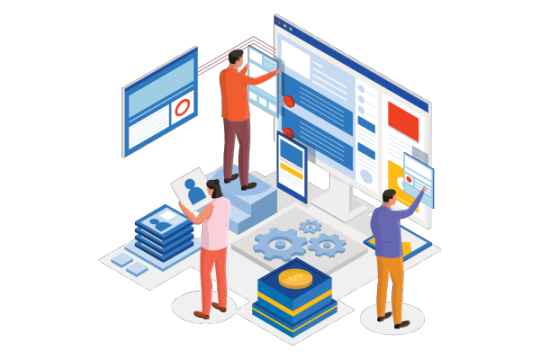
Outline the architecture of your SaaS application. Decide on the technology stack, including programming languages, frameworks, and databases. Plan the user interface (UI) and user experience (UX) design for optimal usability. Planning and architecture form the bedrock of SaaS creation. Detailed planning involves defining the project scope, goals, and resources.
Architecture sets the technical framework, selects technologies, and designs the application's structure. Both ensure that the SaaS aligns with user needs, streamlines development, and supports scalability. A well-structured foundation allows for efficient coding, reduces future complexities, and paves the way for a successful SaaS product.
4. Development
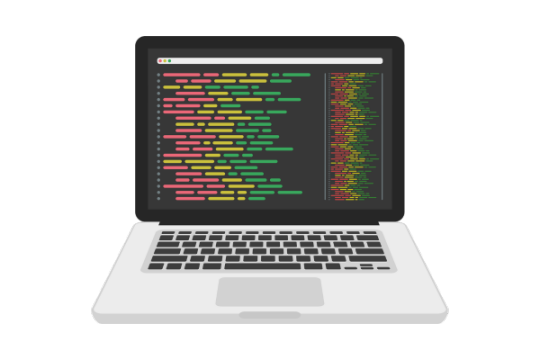
Begin the actual development process. Divide the development into manageable iterations or sprints. Develop the core features of your SaaS application, focusing on functionality, security, and performance. Development is where SaaS concepts materialize into functional reality.
During this phase, coding, testing, and refining take center stage. Core features are coded meticulously, ensuring they align with the planned architecture. Rigorous testing identifies and rectifies issues, resulting in a robust and reliable application. Development is the pivotal stage where ideas transform into user-facing functionality, marking a significant stride toward completing a valuable and innovative SaaS solution.
5. Cloud Infrastructure
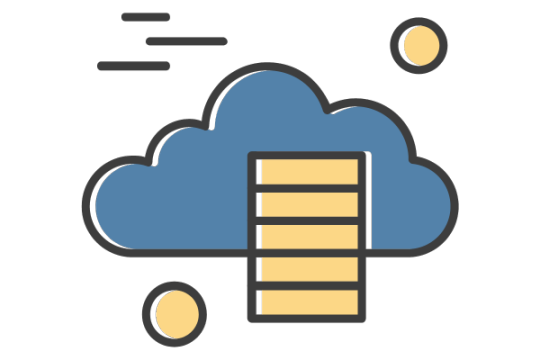
Choose a reliable cloud provider such as Amazon Web Services (AWS), Microsoft Azure, or Google Cloud Platform (GCP). Set up the necessary infrastructure to host your application, manage databases, and ensure scalability. Selecting the right cloud infrastructure is pivotal in SaaS development.
This step ensures the application's accessibility, scalability, and reliability, enabling it to adapt seamlessly to user demands. Leveraging cloud infrastructure optimizes performance, simplifies management, and allows developers to focus on enhancing the user experience rather than grappling with hardware concerns.
6. Multi-Tenancy Architecture
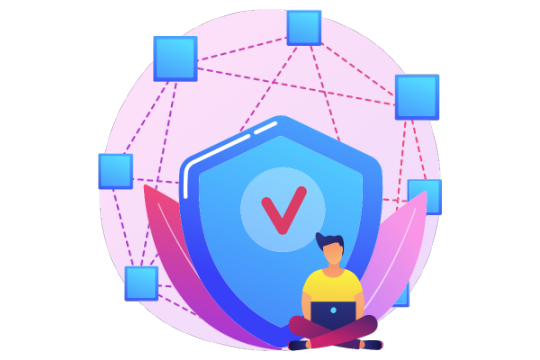
Implement a multi-tenancy architecture, a fundamental aspect of SaaS. This architecture allows a single application instance to serve multiple customers (tenants) securely and efficiently. Implementing a multi-tenancy architecture is fundamental to SaaS development. This approach enables a single application instance to serve multiple users or tenants securely and efficiently.
It streamlines resource utilization, reduces costs, and simplifies maintenance. By segregating data and providing customized experiences within a shared environment, the multi-tenancy architecture ensures scalability and optimized performance, which is essential for any SaaS solution's success.
7. Testing and Quality Assurance
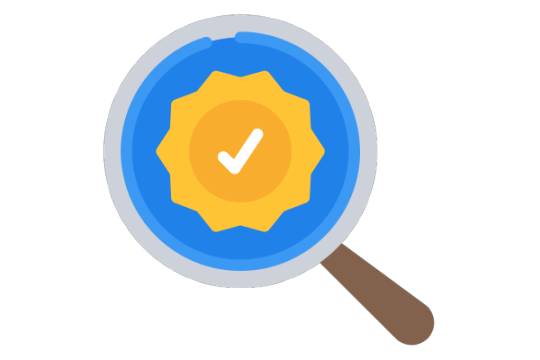
Rigorously test your SaaS application to identify and rectify bugs, glitches, and vulnerabilities. Perform unit, integration, and user acceptance testing to ensure a robust product.
8. Deployment and Scalability

Deploy your SaaS application on the chosen cloud infrastructure. Ensure that the deployment process is automated and can be replicated easily. Implement auto-scaling to handle increased user loads efficiently. Deploying a SaaS application onto a chosen cloud infrastructure is a crucial step. This ensures the solution is accessible to users.
Implementing scalability mechanisms is equally vital, allowing the application to accommodate growing user demands. Developers can effectively manage increased workloads by automating deployment processes and enabling dynamic resource allocation. This step ensures that the SaaS remains responsive, reliable, and capable of handling varying usage levels.
9. Monitoring and Maintenance
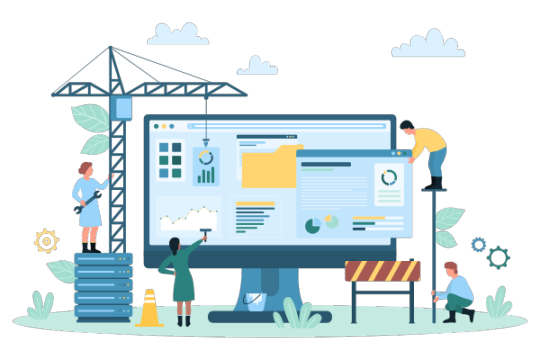
Set up monitoring tools to track the performance and health of your SaaS application. Proactively address any issues that arise and regularly release updates to introduce new features and improvements. Post-launch, continuous monitoring and maintenance are essential.
Monitoring tools track performance, detect anomalies, and provide insights into user behavior. Regular maintenance involves addressing issues promptly, releasing updates, and optimizing functionality. Proactive upkeep ensures the SaaS remains secure, efficient, and user-friendly. By staying vigilant and responsive, developers guarantee a seamless user experience and uphold the reliability of the SaaS application over its lifecycle.
10. User Feedback and Iteration

Once your SaaS is live, gather feedback from users. Use this feedback to make iterative improvements to your application, enhancing its functionality and addressing user needs.
11. Customer Support and Services
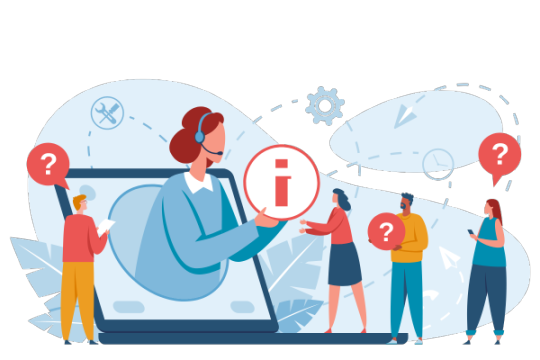
Provide excellent customer support to assist users with any issues they encounter. Consider offering various subscription tiers with different levels of support and services. Exceptional customer support and services are pivotal in SaaS development. Offering responsive assistance and guidance to users builds trust and fosters a positive user experience.
Providing different levels of support, from basic to premium, ensures that users receive the assistance they need. Addressing queries promptly and resolving issues enhances user satisfaction, promotes loyalty, and contributes to the long-term success of the SaaS application.
12. Continuous Innovation
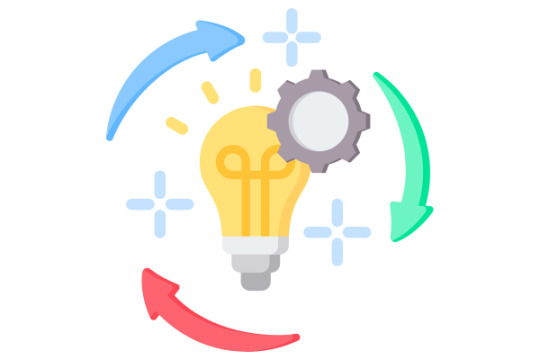
To remain competitive, continuously innovate your SaaS application. Stay updated with industry trends, incorporate new technologies, and evolve your features to meet changing user requirements. Continuous innovation is a cornerstone of successful SaaS development in the ever-evolving tech landscape. After the initial launch, regularly introducing new features, enhancements, and improvements keeps the application relevant and enticing to users.
Staying attuned to market trends, user feedback, and emerging technologies allows developers to adapt swiftly, offering value that resonates with users and maintains a competitive edge in a dynamic market.
SaaS Development Services
SaaS development services offer a solution for businesses looking to build SaaS applications but lacking in-house expertise. These services provide specialized teams with experience in SaaS architecture, development, and deployment. They guide businesses through every stage of SaaS development, from initial ideation to ongoing maintenance.
Conclusion
In conclusion, SaaS development involves creating cloud-based applications accessible over the internet, offering users a convenient and scalable solution. To build a successful SaaS application, thorough planning, proper architecture, security measures, and a customer-centric approach are essential. Leveraging cloud infrastructure, adhering to best practices, and prioritizing user feedback is key to creating a compelling SaaS product. For those seeking assistance, SaaS development services can provide expertise and support throughout the entire development lifecycle.
Embracing SaaS as a software delivery model presents significant opportunities for innovation and growth in today's technology-driven landscape.
#saas#saas development#saas app development#app development#software development#software#software as a service#web portal development#company portal#company portal development
1 note
·
View note
Text
Delivering State-of-the-art SaaS Solutions With 12 Factor App Methodology
The 12 factor app methodology is an excellent way to ensure that SaaS systems are built with scalability, portability, and robustness in mind. This app development approach entails a set of guidelines and principles that developers can use to guarantee that their apps are built with a focus on maintainability and repeatability. Also, it focuses on automating deployments and using the best practices.
#outsourcing#software development#web development#staff augmentation#custom software development#it staff augmentation#custom software solutions#it staffing company#it staff offshoring#custom software#saas application#saas app development#why saas#saas development#saas#saas solutions
0 notes
Text
Explore the innovative software development services offered by Software Development Hub (SDH). From MVP development and AI-powered solutions to ERP software, IoT, and cloud migration, SDH delivers cutting-edge expertise for startups and businesses worldwide. Discover insights, project highlights, and tips on building user-centric applications and driving digital transformation.
#software development#web app development#mobile app development#artificial intelligence#saas development company#custom app development#product development#erp software#enterprise software#python#machine learning development#IoT and IIoT development#machine learning#api development
8 notes
·
View notes
Text
What are the unique challenges faced in developing iOS apps?
iOS App Development Services

iOS App Development is also known and considered for its sleek interface, strong security, and loyal user base and stand. However, building and crafting the apps for Apple devices isn't without its hurdles or obstacles. As the developers often face and seek unique challenges that differ and outlast from other platforms like Android. These challenges and obstacles can affect down the timelines, budgets, and overall user experience and matches if not managed carefully or sought in for.
Strict App Store Guidelines:
One of the most common challenges and occurrences in iOS App Development is meeting Apple's strict App Store policies and standard guidelines. As the review process is more rigorous and stiff sometimes than the most common platforms, apps can get rejected for minor issues—ranging from UI design to privacy violations. Developers must thoroughly review Apple's Human Interface Guidelines and follow best practices to avoid delays or rejections.
Limited Customization Options:
Apple has a highly controlled ecosystem. While this assures up the consistency and overall performance is maintained and is stuck with it, as it limits up the developers' ability to customize their user interfaces or access the set of certain hardware functionalities. This means more time and efficiency is intended to be spent finding creative workarounds to deliver unique features within the platform's constraints.
Device and OS Compatibility:
Though Apple has fewer devices than Android, iOS App Development must still account for different screen sizes, resolutions, and operating system versions. Supporting older iOS versions can be tricky, as Apple users adopt new versions quickly, but some still rely on older devices.
Frequent OS Updates:
Apple regularly updates iOS, which can introduce new features and deprecate existing ones. Developers need to stay current and adapt their apps quickly. Failing and not opting to do so can and may lead towards compatibility issues or the app crashes, impacting the overall user satisfaction and their experience which helps to build a smooth appearance to the users.
Security and Data Privacy Compliance:
Apple places high emphasis on user privacy and app security and safeguarding their thoughts and processes. Apps must comply with requirements like App Tracking Transparency (ATT) data encryption standards and commonly specified parameters. Assuring these compliances and sticked with added extra layers of testing and development work into it. While iOS App Development offers and assists with great rewards, it demands precision, flexibility, and constant adaptation. Companies like Suma Soft, IBM, Cyntexa, and Cignex bring the expertise to navigate these challenges effectively, helping businesses to launch their polished, compliant, and user-friendly iOS apps.
#it services#technology#saas#software#saas development company#saas technology#digital transformation#ios app development#ios
2 notes
·
View notes
Text
Explore the financial landscape of SaaS development with our insightful guide on 'How Much Does It Cost to Develop a SaaS Application?' This concise yet comprehensive overview delves into the key factors influencing costs, from initial planning to ongoing maintenance. Uncover invaluable insights to make informed decisions and ensure a successful and cost-effective journey in bringing your SaaS vision to life.
0 notes
Text
Excellence SaaS App Development Company for Innovative Solutions
Unlock unparalleled software excellence with our SaaS App Development Company. We blend cutting-edge technology and strategic vision to craft bespoke solutions that redefine your business. From concept to deployment, our seasoned developers ensure seamless integration, scalability, and user-centric designs. Elevate your enterprise with our SaaS expertise.

1 note
·
View note
Text
Top Enterprise Software Trends To Follow In 2024 - A complete Guide
Read more Blogs,
Visit Website, Glasier Inc.
Hire swift developer
Hire flutter developer Hire SaaS developers
Hire Android app developers
Hire IOS developers
#android app development#hire saas developers#hire dedicated developers#app developing company#ios app development trends#ios app development services#mobile app development company#app development company#hire saas developer#custom software development#ERP software development company
2 notes
·
View notes
Text
Built-in Logging with Serilog: How EasyLaunchpad Keeps Debugging Clean and Insightful

Debugging shouldn’t be a scavenger hunt.
When things break in production or behave unexpectedly in development, you don’t have time to dig through vague error messages or guess what went wrong. That’s why logging is one of the most critical — but often neglected — parts of building robust applications.
With EasyLaunchpad, logging is not an afterthought.
We’ve integrated Serilog, a powerful and structured logging framework for .NET, directly into the boilerplate so developers can monitor, debug, and optimize their apps from day one.
In this post, we’ll explain how Serilog is implemented inside EasyLaunchpad, why it’s a developer favorite, and how it helps you launch smarter and maintain easier.
🧠 Why Logging Matters (Especially in Startups)
Whether you’re launching a SaaS MVP or maintaining a production application, logs are your eyes and ears:
Track user behavior
Monitor background job status
Catch and analyze errors
Identify bottlenecks or API failures
Verify security rules and access patterns
With traditional boilerplates, you often need to configure and wire this up yourself. But EasyLaunchpad comes preloaded with structured, scalable logging using Serilog, so you’re ready to go from the first line of code.
🔧 What Is Serilog?
Serilog is one of the most popular logging libraries for .NET Core. Unlike basic logging tools that write unstructured plain-text logs, Serilog generates structured logs — which are easier to search, filter, and analyze in any environment.
It supports:
JSON log output
File, Console, or external sinks (like Seq, Elasticsearch, Datadog)
Custom formats and enrichers
Log levels: Information, Warning, Error, Fatal, and more
Serilog is lightweight, flexible, and production-proven — ideal for modern web apps like those built with EasyLaunchpad.
🚀 How Serilog Is Integrated in EasyLaunchpad

When you start your EasyLaunchpad-based project, Serilog is already:
Installed via NuGet
Configured via appsettings.json
Injected into the middleware pipeline
Wired into all key services (auth, jobs, payments, etc.)
🔁 Configuration Example (appsettings.json):
“Serilog”: {
“MinimumLevel”: {
“Default”: “Information”,
“Override”: {
“Microsoft”: “Warning”,
“System”: “Warning”
}
},
“WriteTo”: [
{ “Name”: “Console” },
{
“Name”: “File”,
“Args”: {
“path”: “Logs/log-.txt”,
“rollingInterval”: “Day”
}
}
}
}
This setup gives you daily rotating log files, plus real-time console logs for development mode.
🛠 How It Helps Developers
✅ 1. Real-Time Debugging
During development, logs are streamed to the console. You’ll see:
Request details
Controller actions triggered
Background job execution
Custom messages from your services
This means you can debug without hitting breakpoints or printing Console.WriteLine().
✅ 2. Structured Production Logs
In production, logs are saved to disk in a structured format. You can:
Tail them from the server
Upload them to a logging platform (Seq, Datadog, ELK stack)
Automatically parse fields like timestamp, level, message, exception, etc.
This gives predictable, machine-readable logging — critical for scalable monitoring.
✅ 3. Easy Integration with Background Jobs
EasyLaunchpad uses Hangfire for background job scheduling. Serilog is integrated into:
Job execution logging
Retry and failure logs
Email queue status
Error capturing
No more “silent fails” in background processes — every action is traceable.
✅ 4. Enhanced API Logging (Optional Extension)
You can easily extend the logging to:
Log request/response for APIs
Add correlation IDs
Track user activity (e.g., login attempts, failed validations)
The modular architecture allows you to inject loggers into any service or controller via constructor injection.
🔍 Sample Log Output
Here’s a typical log entry generated by Serilog in EasyLaunchpad:
{
“Timestamp”: “2024–07–10T08:33:21.123Z”,
“Level”: “Information”,
“Message”: “User {UserId} logged in successfully.”,
“UserId”: “5dc95f1f-2cc2–4f8a-ae1b-1d29f2aa387a”
}
This is not just human-readable — it’s machine-queryable.
You can filter logs by UserId, Level, or Timestamp using modern logging dashboards or scripts.
🧱 A Developer-Friendly Logging Foundation
Unlike minimal templates, where you have to integrate logging yourself, EasyLaunchpad is:
Ready-to-use from first launch
Customizable for your own needs
Extendable with any Serilog sink (e.g., database, cloud services, Elasticsearch)
This means you spend less time configuring and more time building and scaling.
🧩 Built-In + Extendable
You can add additional log sinks in minutes:
Log.Logger = new LoggerConfiguration()
.WriteTo.Console()
.WriteTo.File(“Logs/log.txt”)
.WriteTo.Seq(“http://localhost:5341")
.CreateLogger();
Want to log in to:
Azure App Insights?
AWS CloudWatch?
A custom microservice?
Serilog makes it possible, and EasyLaunchpad makes it easy to start.
💼 Real-World Scenarios
Here are some real ways logging helps EasyLaunchpad-based apps:
Use Case and the Benefit
Login attempts — Audit user activity and failed attempts
Payment errors- Track Stripe/Paddle API errors
Email queue- Debug failed or delayed emails
Role assignment- Log admin actions for compliance
Cron jobs- Monitor background jobs in real-time
🧠 Final Thoughts
You can’t fix what you can’t see.
Whether you’re launching an MVP or running a growing SaaS platform, structured logging gives you visibility, traceability, and peace of mind.
EasyLaunchpad integrates Serilog from day one — so you’re never flying blind. You get a clean, scalable logging system with zero setup required.
No more guesswork. Just clarity.
👉 Start building with confidence. Check out EasyLaunchpad at https://easylaunchpad.com and see how production-ready logging fits into your stack.
#Serilog .NET logging#structured logs .NET Core#developer-friendly logging in boilerplate#.net development#saas starter kit#saas development company#app development#.net boilerplate
1 note
·
View note
Text
Five Tips on Efficient SaaS Apps Provisioning
It’s necessary to ensure that all employees have access to the right SaaS apps, the software is configured correctly and running, and nobody can reach data lying beyond their scope of work. At the same time, businesses must consider the security implications of provisioning and the need to protect sensitive data. The task may seem unbearable. However, by following best practices and being mindful of the risks, businesses can ensure their applications are correctly provisioned with minimal effort and cost.
#outsourcing#software development#web development#staff augmentation#custom software development#it staff augmentation#custom software solutions#it staffing company#it staff offshoring#custom software#saas app development#saas application#why saas#saas development#saas
0 notes